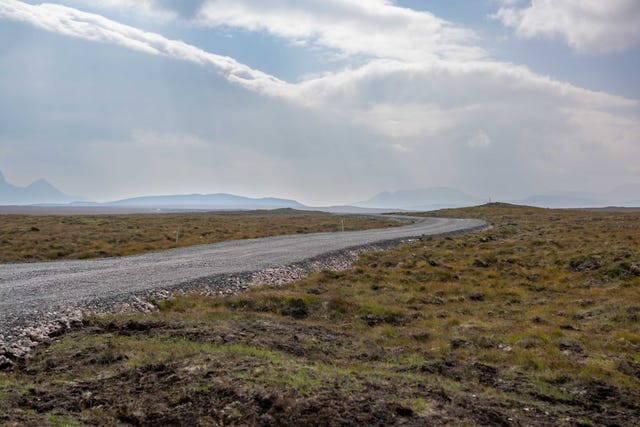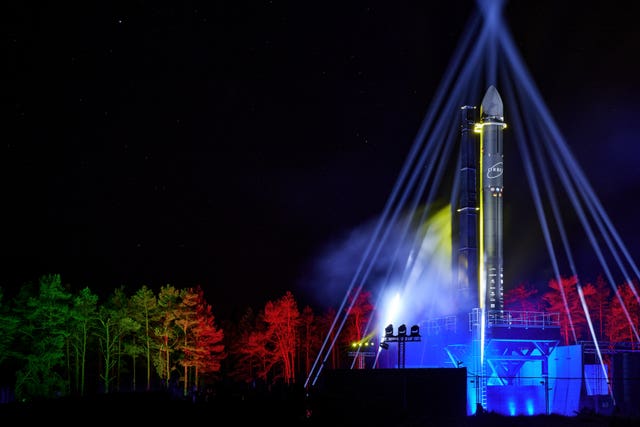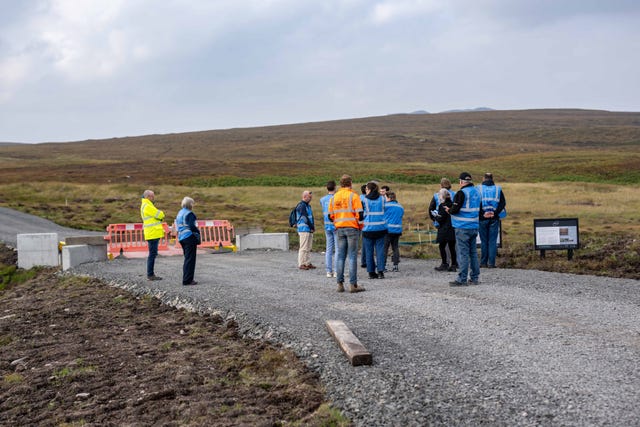Spaceport’s ‘floating road’ over peat bog nearly finished ahead of test launch
Orbex aims to carry out its first launch from the ‘carbon neutral’ spaceport in northern Scotland next year.

A “floating road” being built over a peat bog near the north coast of Scotland is nearly complete, as work to transform the site into a spaceport for satellite launches continues.
The Forres-based company Orbex aims to carry out its first launch from the “carbon neutral” spaceport next year, using a 19-metre-long rocket powered by liquefied petroleum gas (LPG).
Journalists were shown progress on the Sutherland Spaceport site last week, with the company emphasising the steps they are taking to minimise the impact on the environment.
However, next month, Highland Council is to issue a planning decision on a key part of the spaceport’s design: two radio antennae on the summit of the nearby mountain, Ben Loyal.

Much of the spaceport site on the A’Mhoine peninsula is protected peatland and the access road has been built by gradually placing a mesh frame and stone on top of the wet peat until it forms a firm enough surface, becoming a so-called “floating road”.
This allows the hydrology of the peat bog to continue underneath the road.
Work to carry out the UK’s first satellite launch continues at the rival SaxaVord Spaceport in Shetland, where German company RFA is testing its rocket engines.
Last month, an explosion led to the destruction of the lower stage of RFA’s first rocket, meaning they are waiting for a replacement to arrive.

But despite the incident at SaxaVord, staff at Orbex played down suggestions there is a race to carry out the first successful space launch from UK soil.
Lesley Still, chief of spaceport operations, said they hope to carry out a test launch next year and excitement is building within the team.
She said: “No race for us, I think we’ll be ready when we’re ready.
“If that happens to be first, then great – but it is not something that we’re striving for. Rushing doesn’t help.”

If the first two test launches go well, she said their frequency would build in 2026, with Orbex ultimately aiming to do 12 launches each year.
She said: “We’re the only company that owns both a spaceport and the launch vehicle, we need all the capacity that we have here for our own business.
“We’re not concerned about competition out there – there’s a huge market.
“We wish the others well.”

She said it is “exciting” that Scottish satellites could soon be launching on rockets made in Forres from a spaceport in the Highlands.
John May, spaceport programme manager at Orbex, said the one-and-a-half-mile stretch of floating road is 90% finished.
Next, the company will begin work on the integration hangar, where satellites are mated with the assembled rocket, as well as the launch pad.
Building on the peatland near several protected sites of scientific interest (SSIs) has led to many challenges and the company will have to halt operations if rare birds are found nesting on site.

Mr May said locals referred to part of the peninsula as “death valley” because it is so boggy sheep would get stuck there while grazing.
Mr May said the road is a “moving, breathing beast” – after vehicles go across the causeway it can sink several inches.
In order to reduce wear and tear on the surface, Orbex pauses traffic for 30 minutes each time a truck uses the road.





